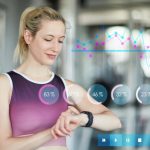Accessing meaningful insights from company data often requires extensive manual effort and technical expertise, causing delays and inefficiencies for many organizations. Recent advances have made this process faster, but many businesses still face hurdles in aggregating and analyzing data from multiple sources such as CRM systems, e-commerce platforms, and martech stacks. With growing demands for timely decision-making, organizations are seeking more immediate routes to actionable intelligence for everyday users—not just data specialists.
Several months ago, news around business intelligence platforms commonly emphasized the technical barriers involved in adopting AI-powered analytics. Earlier tools required substantial setup, coding skills, and often operated as “black boxes” with little transparency for end-users. In contrast, new offerings like Fabi’s vibe analytics provide both transparency and ease of use, making advanced insights accessible to a wider range of roles beyond data scientists and technical staff.
How Does Vibe Analytics Simplify Insights?
Vibe analytics enables business users to interact with complex datasets using natural language rather than code, delivering results as text summaries, graphics, or data breakdowns. Unlike conventional methods that require time-consuming data preparation, this approach reduces manual data wrangling and allows insights to surface from live business data almost instantaneously. Lumo, a company in agriculture, leverages the Fabi.ai platform to link IoT device metrics with environmental data, helping teams respond more effectively to operational changes.
What Sets Fabi’s Platform Apart?
Fabi’s generative BI platform focuses on making data analysis approachable for semitechnical users and experts alike. Users can access code generated by the platform to understand, edit, or verify how results are produced, enabling collaboration between business leads and data professionals. Marc Dupuis, Fabi’s co-founder and CEO, highlights:
“We designed Fabi to give organizations transparency and control, so both technical and non-technical users can trust their results.”
Teams can further safeguard accuracy by restricting vibe analytics to authorized internal data and by auditing the system’s outputs.
How Are Organizations Using These New Analytics Tools?
Routine workflows supported by Fabi include real-time KPI dashboards, ad-hoc question-and-answer sessions over operational data, and correlation analysis between business metrics and external factors. Reports can be shared via scheduled emails, Slack, or Google Sheets and can mix textual summaries with data visualizations. The flexibility appeals to organizations aiming to streamline collaboration and speed up their insight generation. As Marc Dupuis explains,
“Testing our workflows on sample data gives our users confidence before moving to real-world scenarios.”
When compared to earlier analytics software, vibe analytics and platforms like Fabi stand out for their focus on transparency, collaborative flexibility, and user empowerment. Previously, integrating business data across systems meant heavy IT and developer involvement, which could slow down response times and exclude non-technical voices from analytics processes. Now, by granting users direct interaction through natural language and open code review, businesses can democratize access to company data and foster more data-driven cultures. While rapid insights are beneficial, maintaining rigorous data access controls and transparent methodologies remains crucial for trustworthy analytics, particularly as AI roles in business intelligence expand.










